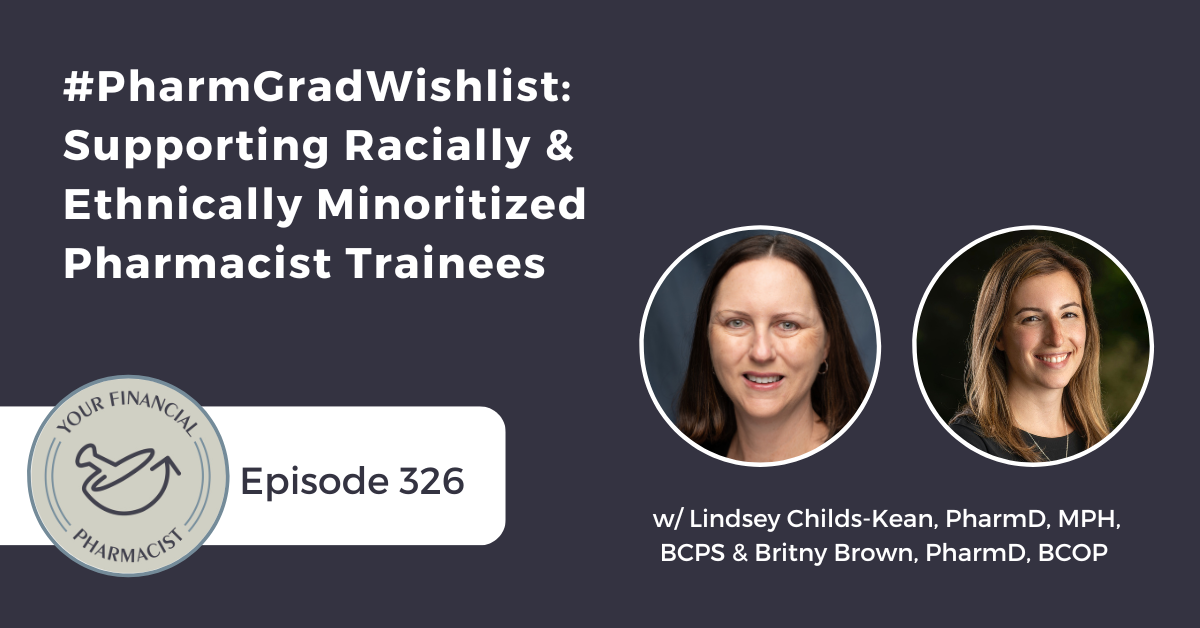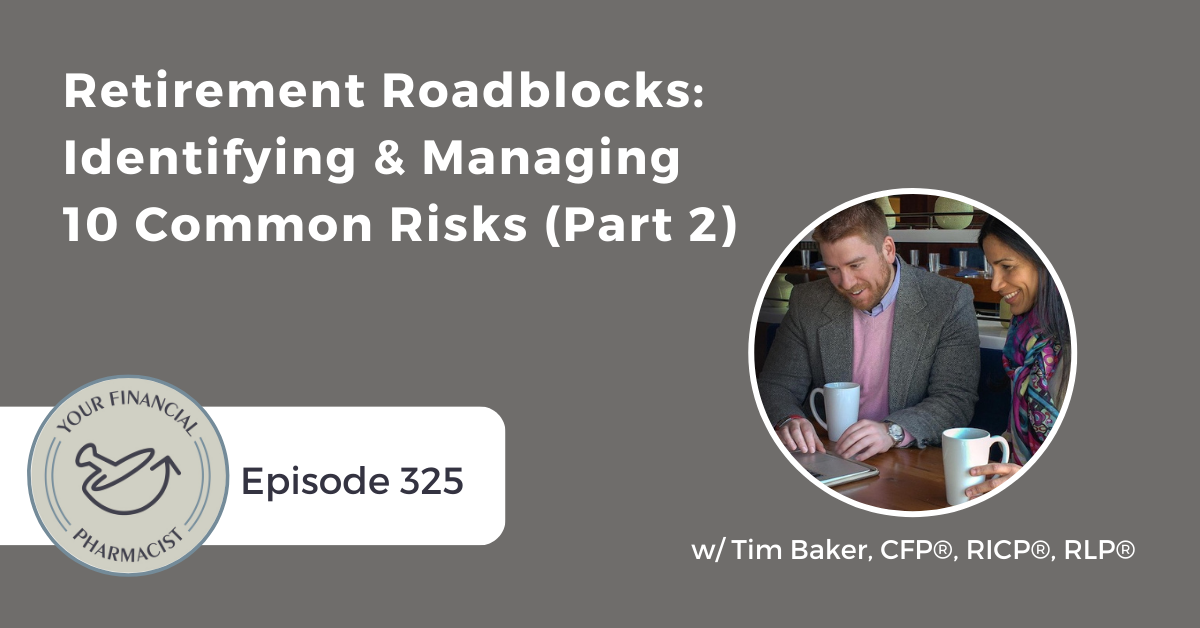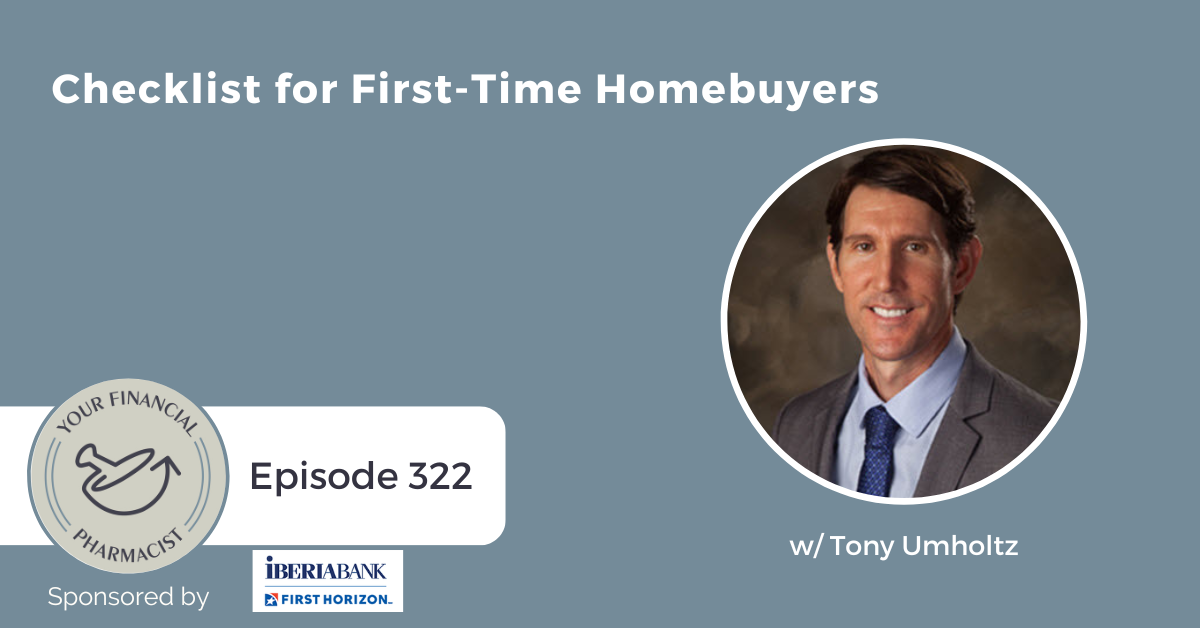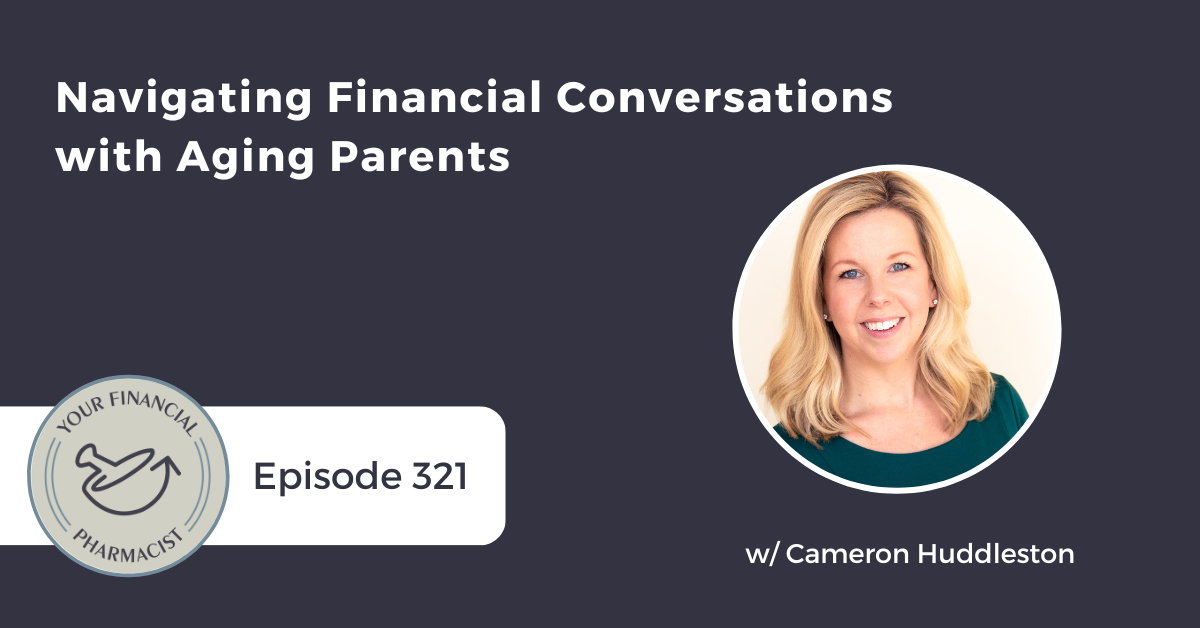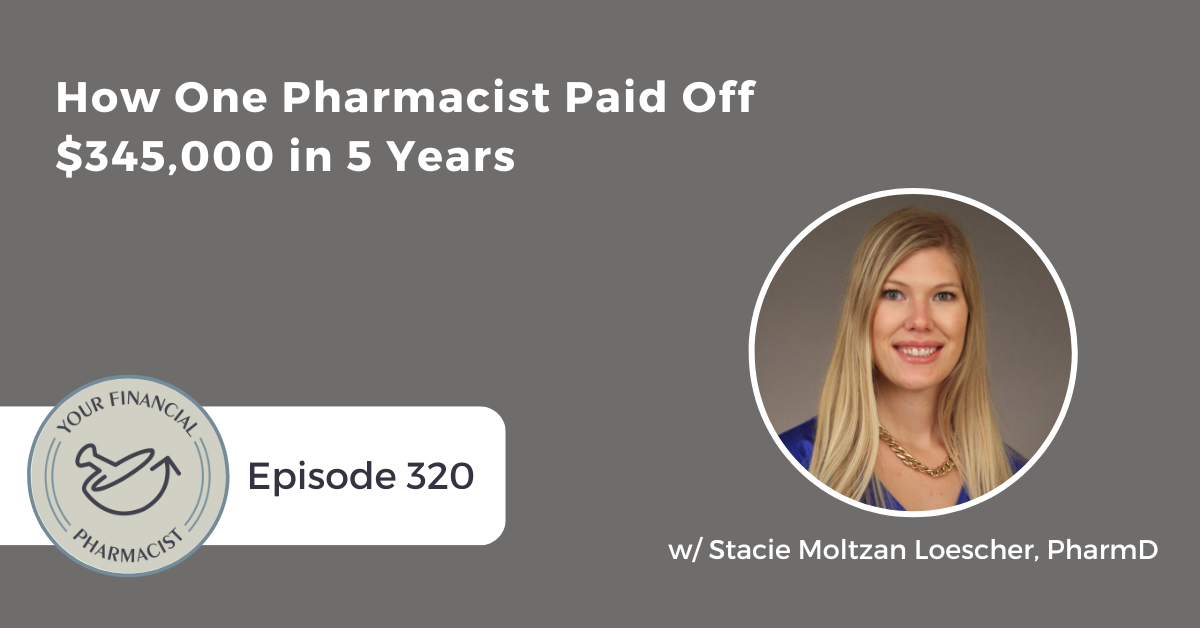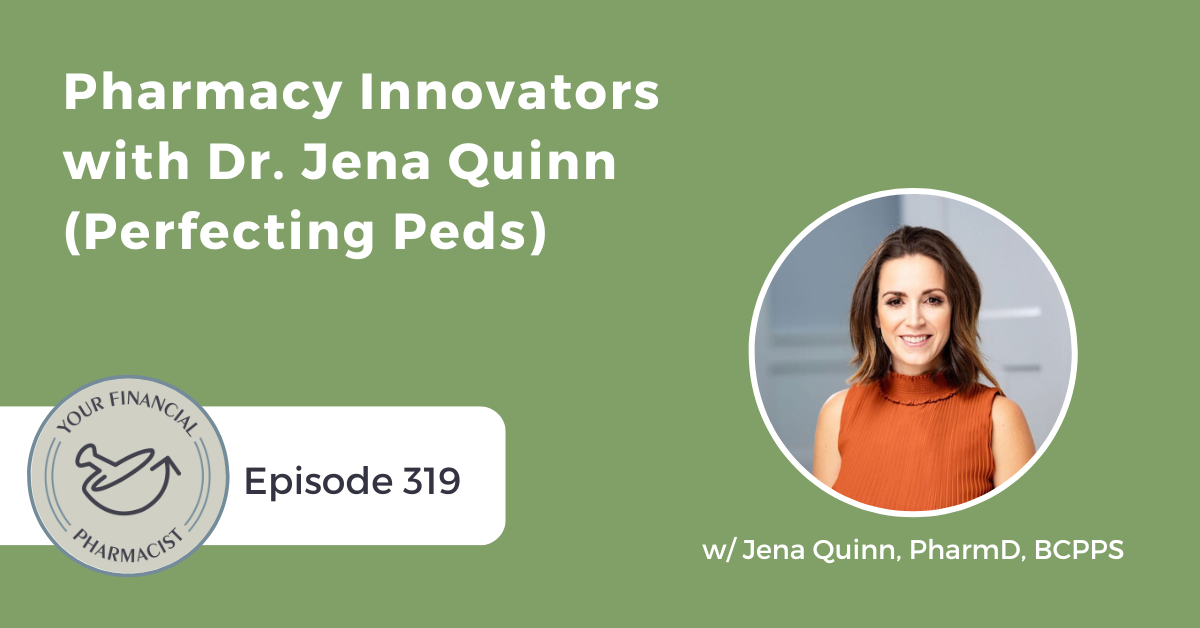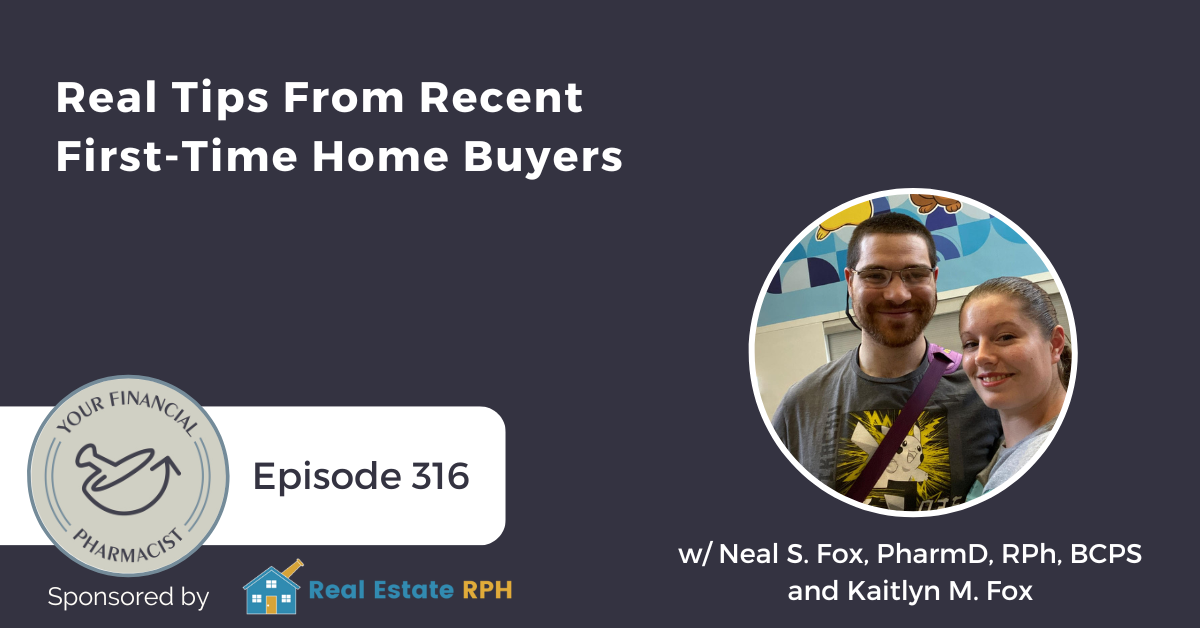Drs. Lindsey Childs-Kean and Britny Brown share their work with #PharmGradWishlist to support emerging racially and ethnically minoritized pharmacy trainees.
Episode Summary
It is no secret that there are minorities underrepresented in pharmacy despite the evidence suggesting that racial concordance matters. Joining us today are two individuals, Lindsey Childs-Kean and Britny Brown, who are committed to improving representation by supporting emerging racially and ethnically minoritized pharmacy trainees. You’ll hear about the incredible PharmGradWishlist organization, what its mission is, why it’s important, and how to get involved.
About Today’s Guest
-
Lindsey Childs-Kean is a Clinical Associate Professor in the Department of Pharmacotherapy and Translational Research with the University of Florida College of Pharmacy. She earned her PharmD degree from University of Florida and completed a PGY1 residency at Tampa General Hospital and a PGY2 Infectious Diseases residency at the South Texas Veterans Healthcare System. Her teaching, research, and practice interests include infectious disease pharmacotherapy and professional development of students and new practitioners. She is active in many professional organizations, including being a member of the PharmGradWishList Leadership Team and an Associate Editor for the American Journal of Pharmaceutical Education.
-
Britny Brown, PharmD, BCOP is a Clinical Associate Professor at the University of Rhode Island. Her clinical practice site is Smilow Cancer Center in Westerly, RI, where she focuses on the management of patients receiving oral anticancer therapy. Britny also has a passion for health equity. She is co-chair of the Diversity and Globalization Committee within URI’s College of Pharmacy, is a leadership team member for PharmGradWishlist, and is a member of the HOPA DEI Advisory Group.
Key Points From the Episode
- Welcoming Lindsey Childs-Kean and Britny Brown and why they were drawn to this field.
- All about PharmGradWishlist and what the goal is.
- How PharmGradWishlist got started and what inspired our guests to get involved.
- Why underrepresentation matters in this profession and healthcare at large.
- The differences between internal and external support for minorities in the pharmacy field.
- Financial issues minorities, in particular, face as they transition to pharmaceutical residency.
- How listeners can learn more about PharmGradWishlist and get involved in their mission.
- What’s in the cards for the future of PharmGradWishlist.
Episode Highlights
“[PharmGrad Wishlist’s] mission is to promote equity by sponsoring racially and ethnically minoritized pharmacists and pharmacists’ trainees as they progress through the profession.” — @HemeOncPharm [0:03:32]
“Racial concordance does correlate to improved health outcomes, increased patient satisfaction, decreased emergency room utilization, and decreased health care utilization.” — @HemeOncPharm [0:13:25]
“What we’re focused on doing with PharmGradWishlist is supporting those individuals who are in pharmacy school and in the pharmacy profession, as they move through the profession.” — @corevalues5 [0:16:28]
“We’ve told you about what we’ve done [in] the last two years and we really think we’re just getting started [with PharmGradWishlist]” — @corevalues5 [0:24:55]
Links Mentioned in Today’s Episode
- PharmGradWishlist
- JAPhA Article: ‘Brighter Horizons: The Necessity of Concentrated Sponsorship Targeted Toward Minoritized Student Pharmacists’
- PharmGradWishlist Email Address
- PharmGradWishlist on LinkedIn
- PharmGradWishlist on Facebook
- PharmGradWishlist on X
- PharmGradWishlist on Instagram
- Lindsey Childs-Kean on LinkedIn
- Lindsey Childs-Kean on X
- Lindsey Childs-Kean on Instagram
- Britny Brown on LinkedIn
- Britny Brown on X
- Tim Ulbrich on LinkedIn
- YFP Blog: ‘Money Talks: The Price of the Pharmacy Residency Quest’
- YFP Disclaimer
- Subscribe to the YFP Newsletter
Episode Transcript
[INTRODUCTION]
[0:00:01] TU: Hey, everybody. Tim Ulbrich here. Thank you for listening to the YFP Podcast, where each week we strive to inspire and encourage you on your path towards achieving financial freedom. This week, I welcome Lindsey Childs-Kean, and Britny Brown to the show to talk about PharmGradWishlist and the vision they have to support racially and ethnically minoritized pharmacy trainees. We discuss the inspiration for PharmGradWishlist, the impact that it’s having, and how others can get involved.
Before we jump into my conversation with Lindsey and Britny, let’s hear a brief message from YFP team member Justin Woods.
[YFP MESSAGE]
[0:00:33] JW: Hey, Your Financial Pharmacists community. This is Justin Woods here, Director of Business Development at YFP. You may be one of the 13,000 pharmacists that have already signed up for YFP Money Matters, which is our weekly newsletter, but if you’re not, what are you waiting for? I want to invite you to subscribe. We send financial tips, recommendations, the latest podcast episode, and money resources, all specifically for pharmacists. It all comes straight to your inbox every Friday morning, so visit yourfinancialpharmacist.com/newsletter, or click the link in the show notes to subscribe today. Again, that’s yourfinancialpharmacist.com/newsletter. See you there.
[INTERVIEW]
[0:01:19] TU: Lindsey and Britny, welcome to the show.
[0:01:21] LCK: Thanks for having us, Tim.
[0:01:22] BB: Thank you so much. We’re very excited to be here.
[0:01:24] TU: Lindsey, let’s have you kick us off by introducing yourself to our listeners, including what drew you into the profession and the work that you’re doing now.
[0:01:35] LCK: I’m Lindsey Childs-Kean. I’m a clinical associate professor at the University of Florida College of Pharmacy. My clinical area of specialty is infectious diseases, but I do most of my time as a faculty member teaching and mentoring pharmacy students. I could talk a long time about how I got into pharmacy school because I took a very weird trajectory to pharmacy school. Basically, I ended up making the decision that in looking at the healthcare system, there was so much that pharmacists could do that I wanted to be a part of that. So, that’s why I went to pharmacy school. Then I also have a master’s of public health degree and my specialty was global infectious diseases. That’s how I got into the infectious disease area and did two years of residency, including an infectious disease residency after pharmacy school.
[0:02:25] TU: Great. Britny, how about for you?
[0:02:27] BB: Yeah. Thanks for having us. I’m a clinical associate professor, as well, at the University of Rhode Island. My area of focus is oncology. I would say my trajectory into where I am now started with just being interested in pharmacy, learning more about medications, and how we can improve health outcomes. Getting into cancer care, I was initially really intimidated, because it’s a different language, but seeing the impact that we can have is what drove me towards specifically working with that patient population.
[0:02:59] TU: Great. Well, we are excited to have both of you. While you had great pharmacy careers, that’s not what we’re here to talk about today. We’re going to be focusing rather on the work that you and others are doing in leading through the PharmGradWishlist. Britny, let’s start with you. Tell us more about PharmGradWishlist. What’s the mission? How did it get started? What’s the goal? What are you trying to achieve?
[0:03:21] BB: Absolutely. PharmGradWishlist is a mutual aid organization of 10 practicing pharmacists across the country that make up our leadership team. Our mission is to promote equity by sponsoring racially and ethnically minoritized pharmacists and pharmacists’ trainees as they progress through the profession. We did model this after a similar movement in the medical community called MedGradWishlist. It’s evolved to more than just wish lists. That part stems from individuals, trainees usually, making Amazon wish lists and what they need to enter into their pharmacy profession.
It might be a variety of different things, office supplies to help them get started, study materials, and sponsors nationally can work through and identify individuals they’d like to sponsor as they enter their career. In addition, we’ve also created a scholarship program for the last two years now going into our third year for individuals that are seeking postgraduate training. We have some stats with that.
Our first year, we sponsored $2,500 scholarships. In our second year, which was 2022 through this spring, we sponsored 39 scholarships. That encompassed actually just 85 unique donors. The large vast majority of donors actually contributed a significant amount to our sponsees. We really hope to continue that momentum and bring our movement to other people’s attention. I’ll let Lindsey talk a little bit more about what else we’ve done with our movement as well.
[0:05:03] LCK: Yeah. Also, to note, in addition to that number of scholarships that we’ve done over two years, we also have had well over a hundred wish lists each year that have been available for sponsors to choose to support our sponsees. Outside of the wish lists and scholarships, those are obviously our two really big initiatives that we do each year. We’ve also been able to work with a number of racially and ethnically minoritized trainees in publishing, commentaries, and other types of articles.
We have at least five published papers to date, depending upon when this goes live. If something else might be published by then, and we’ve got some others in the works. So, we encourage the listeners to go read those publications. We also – because we are recruiting sponsors and sponsees, we put a big focus on communications. We have a website. We also have a blog, where we will write about different issues that are related to racial and ethnic concerns.
We’re also active on multiple social media platforms. So basically, if there’s a social media platform, we’re probably there. One other thing that we have looked or to expand out is partnering with other pharmacy organizations, both national and state level and regional organizations. These take different flavors of what we do to help support their trainees in that particular area or within their mission and scope.
[0:06:37] TU: If I heard the two of you correctly, really three major areas, scholarships, wish lists, and now on the publication dissemination of information with an expansion going out to organizations and opportunities for them to get involved as well. Really incredible work. First of all, congratulations. I mean, to see the grassroots efforts of that. I mean, 20 to 39 scholarships. I mean, that’s a big impact. There are over 300,000 pharmacists in the country, right? Britny, I think you mentioned somewhere in the 75, 80-ish donors that went –
[0:07:11] BB: Yeah. 85 donors this year Yeah.
[0:07:13] TU: 85. What an awesome opportunity. We’ll talk about that at the end of the show, as well. For folks that want to get involved. Let’s do it, right? Great work that’s being done, but also great opportunities that are still to be had as you look to grow the impact that your work is doing. Lindsey, my question here is why get involved with PharmGradWishlist, right? There’s lots of different opportunities to give back, to be involved. Certainly, this is an investment of your time, as well as the others that are on the leadership team. What really is the motivation for you to get involved?
[0:07:46] LCK: Some of our backstory is that pharm, the leadership team really formed over the social media platform that used to be called Twitter. One of our leadership team members said, “Hey, there’s this MedGradWishlist thing going on. Why don’t we do it in pharmacy?” It was an informal call for others to get involved. The more I looked into it, I really gravitated towards the very tangible method of support. It’s one thing to donate money or time to a big national organization, but you don’t always know where that money and time and effort are going to. Whereas with this, I know very specifically.
If I buy a set of scrubs for a trainee who’s going to be starting residency in a couple of months, that’s very tangible or if I donate money towards a scholarship, I see that money going directly to that recipient. It’s a very tangible way to support our efforts to diversify and make our profession more equitable. That’s what drew me to PharmGradWishlist.
[0:09:01] TU: Yeah. I really like what you said there. I recently had on the podcast, Tom Dauber, who has a career in advancement and giving, working with institutions, most notably colleges of pharmacy. One of the questions I asked him is what are donors often looking for, right? Is there making a selection or a choice of a gift? He talked exactly about what you said impact, right? Being able to see or feel directly, not only that there’s an alignment there of something that they care about, but that they also can be able to see that change or see the impact that that gift is happening. Britny, what about for you? What was the motivation, the inspiration for your involvement?
[0:09:39] BB: Similar to Lindsey, I was just felt very lucky that our colleague Betsy had reached out to us, identifying that we’re all like-minded individuals that wanted to see change in terms of representation in our profession. I think probably similar to many of our listeners, not many of us knew where to start, right? There was an infrastructure that existed to help make that change. I think that’s what PharmGradWishlist provides, right? That tangible impact that Lindsey was talking about, but also giving you the infrastructure.
Hopefully, it makes our supporters easily able to access that, right? To see change tangibly in a short period of time, but also to not have to do much work to get there. You just click a link, provide your money or decide what you want to give to someone on their wish list. It’s really as easy as five minutes of your time.
[0:10:36] TU: You guys have done a great job with the website. I think it very succinctly talks about what you’re doing, why you’re doing it. For those that are eager to go look at that, we’ll mention at the end as well, link to it in the show notes. It’s pharmgradwishlist.org. Again, it’s pharmgradwishlist.org. I want to talk a little bit, and Britny, I’m going to start with you and Lindsey, feel free to jump in as well.
There was a commentary that the two of you, as well as a group of others, were involved with, published in JAPhA in 2022, we’ll link to it in the show notes. The title was Brighter Horizons: The Necessity of Concentrated Sponsorship Targeted Toward Minoritized Student Pharmacists. Talking a lot about the why and the how of what you’ve been building at at PharmGradWishlist. Britny, perhaps an obvious question, but one that I feel needs to be asked is, why does this mission matter? Why does under-representation matter in our profession and health care at large?
Let me read one passage from the commentary and then get your take on it. That passage is, “Since the American Association of Colleges of Pharmacy began reporting data on races and ethnicities of student pharmacists in 1985, students who identify as Black, Hispanic, or Latinx, American Indian, or Alaska Native have enrolled and graduated at disproportionately lower rates compared with their demographic makeup and the US population.” Why does that matter?
[0:12:00] BB: That’s a great question. I’m so glad that you’re asking it. I think we hear a lot of representation matters, right, regardless of whether we’re talking about pharmacy, medicine, politics, seeing oneself in their profession helps others to envision that they could potentially one day be there. We’re pharmacists. We like data. There is data that exists in the healthcare realm that having representation improves health outcomes.
Much of this data stems from medicine, doctors that have decreased morbidity and mortality when they have racially concordant providers. That’s there. We know that it decreases mortality with physicians. Unfortunately, that data hasn’t been found yet in pharmacy specifically, however, there has been data that looks at how we improve adherence just by being racially concordant. One could potentially extrapolate that to say, if you’re more adherent to your diabetes medications, you’re more likely to gain control of your diabetes, likewise with hypertension and cancer.
I think that it’s just an opportunity for us to do more research in this area. It’s something that we’re certainly advocating for our pharmacy colleagues to pursue, but we do know that overall, within medicine, that racial concordance does correlate to improved health outcomes, increased patient satisfaction, decreased emergency room utilization, and decreased health care utilization for sick visits and things like that. There’s certainly a precedent that we could set with our research if we have the resources to pursue it.
[0:13:49] TU: Which goes back, I think, so well to the mission, right? You’ve got some tangible opportunities for people to get involved in needs that are there right now. Then when you talk about the research, the publication, the efforts as more individuals, as more organizations get involved in this, obviously those resources can be really important to allow that research work to be happening and hopefully to add to the literature, you know, what’s currently is missing in the pharmacy profession.
Let me continue to put you on the hot seat while I have you there, Britny. In the commentary, it also mentions, “Dismantling structural racism within pharmacy programs requires evaluation of internal and external factors and creation of novel methods to support these students in a holistic manner.” What are a couple key points as it relates to internal versus external and the difference between those?
[0:14:37] BB: Yeah. That’s a great question too. I like to think of internal as within our own pharmacy programs. Whatever structure we have in place, which might include policies, procedures, our institutional status quo, what have we been doing for the last 100 years that might be inherently racist and how do we examine that through an equity lens to see how we might better support our students, right? What microaggressions are occurring in the classroom between professors and students, students to students that we can improve upon to make students feel like they are empowered to succeed in school and then their profession. How do we retain our diverse learners?
Then externally, I would think of that more as how do we bring diverse people into our profession. Externally, as you said, we don’t have good racial representation. How do we, in a world that is inherently racist, engage people who hadn’t traditionally seen themselves in our profession or maybe don’t have the same opportunities to accessing postgraduate training as an example? I think those are – that’s the lens that I view it in. I think there’s a lot of different nuances to it that we probably can’t – don’t have the time to get into today, but maybe just some surface-level viewpoints.
[0:16:03] LCK: Yeah. I think one of the things to take away from this is one initiative is not going to solve all these problems. PharmGradWishlist has a very specific mission that we’ve already laid out. We’re not going to do anything about those upstream factors that are preventing diverse groups of people that are getting into pharmacy school, but what we’re focused on doing with PharmGradWishlist is supporting those individuals who are in pharmacy school and in the pharmacy profession, as they move through the profession. We at this point aren’t able to tackle every problem out there, no initiative is. We had to pick something to focus on. This is, as we’ve said, a very tangible way to support the individuals so that hopefully, they are able to bridge the issues and structural racism that they’ve had to face to get to the point that they’re even at.
[0:17:05] TU: Yeah. Speaking of very specific ways to get involved, Lindsey. One of the things that that commentary I think does a nice job of calling out is when we think about residency as just one example, of other efforts that you have ongoing. One thing is that even in talking about this every week some of the connections that may not be so obvious is, hey, traditional financial aid, right, which can lead to student indebtedness and other challenges, but there’s access to resource there does not extend to those additional costs, right?
When we think about what we often see as somebody who goes through their P4 year, they transition into residency or in a fellowship, it is a very difficult financial time, right? Especially if they’re applying out of state, application costs, licensure, moving, new things that come with any type of transition like that. Just talk more about why that transition is so important and why PharmGradWishlist is wanting to really have an impact. For that group where, again, financially, it may not play a role in being able to support those students.
[0:18:10] LCK: You’re absolutely right, Tim. Students get a set amount, a set maximum amount of money every year. That doesn’t matter if you are all of a sudden in your last year of pharmacy school and want to pursue postgraduate training and in all likelihood, that’s going to entail some professional clothing to do an interview, likely travel to do interviews, although more and more programs are doing virtual interviews, which that does sometimes help level the playing field a little bit. Those things just to get to the interview point.
In addition to the fees for applications through forecasts and all of that. Then once you get to, as you mentioned, the transition financial aid ends after that last semester. There’s licensing fees. There are moving fees. Lots of different things that happen. A lot of our students, once they start their first job, they are also in the process of setting up some kind of living arrangement, an apartment or house or something like that. These wish lists are meant for them to put whatever it is that they need for that.
Again, I bought everything from reference textbooks, to kitchen utensils, to scrubs, to really nice-looking pillows so that they can sleep well off of these wish lists. Not having some financial backing of parents or other individuals is very common in our students and trainees who come from racially and ethnically minoritized groups. They don’t have that extra cushion, like I did in pharmacy school where I was like, “Hey, dad, I need an extra $500.” For whatever it was when I was transitioning to residency. A lot of them don’t have that. That’s where the wish lists and the scholarships come into play, where that is again, tangible money or items that they need in those times where money is probably even more tight than it is to begin with.
[0:20:28] TU: Yeah. I think the further, well said, the further we get from graduation or some of us were in these shoes. I think the harder it is for us to remember the feeling that that was, right? I often talk with students and those transitioning that just have this overwhelming feeling as if they’re drowning financially, right? They’ve got these things that they want to pursue, but there’s just so many transition things that are happening. Obviously, student loans are coming back online. They’re making moves, as you mentioned.
We actually have an article on our site. I was just pulling up as we were talking here that Brandon Dyson from TLDR wrote a few years ago on the cost of the pharmacy residency quest, and he broke it down into three phases, the application, the mid-year trip, and then the interview. That doesn’t even account for any of the costs with the transition, right? Once you actually start that residency. When you start to add these things up, like in the application, you’ve got registration for the match, registration for payment for the forecast applications, potentially transcripts that you have to acquire.
Then you have the mid-year trip if you’re pursuing that and all of the travel and costs that come with that. Then obviously the travel and costs that come with the interview as well. You start to stack some of this up and it adds up. That typically is a year where financially, because experiential rotations are often a significant financial burden for students. This is something even on top of that as well that causes some stress. Such a necessary, I think effort to help those students in the transition.
Britny with that in mind is people are listening to this and say, “Hey, I want to help. I want to support. I want to get involved.” Whether that’s with the scholarships, whether that’s with the GradWishlist, whether that’s just staying up to date with what you guys are doing, some of the research that you’re doing. What’s the best place that people can go to learn more and as well to get involved with support?
[0:22:21] BB: Absolutely. Our website that you mentioned pharmgradwishlist.org is a great place to start. You can actually sign up for our email list at the bottom of the website. If you scroll all the way down, enter in your email, any page on that website to stay up to date on what’s going on. We will send out communication with scholarships and wish list go live. In addition, we have social media platforms on Twitter or X as it’s now called, as well as Instagram on both our handle is pharmgradwish. Then on LinkedIn, we are PharmGradWishlist. You can find us on Facebook as well.
[0:23:02] TU: Awesome. What about individuals? I think many people listening are probably interested in getting involved as an individual, but if someone is a leader within an organization, whether it’s an association, as was mentioned previously, whether it’s a for-profit company and they want to get involved with making a donation. Are there opportunities for organizations, companies to get involved as well?
[0:23:25] BB: Absolutely. I think probably the best way if you’re interested in having a higher level of support would be to email us at [email protected] or you could contact us through our website. Either of those should be good ways to get started. That being said, if you are an institution, we have had individuals rally their departments and their colleagues to support scholarships. We’ve had a few instances where they supported multiple scholarships, which was amazing.
Then of course, just helping to get the word out is extremely impactful. As we mentioned earlier with our scholarships, we had 85 sponsors. Imagine if we could reach even 1,000, which is still just a fraction of practicing pharmacists in the United States. So, help us get the word out, share through your institutional newsletters and email lists serves when the time comes that our scholarships are live and wish lists are live.
[0:24:27] TU: Awesome. We’ll link to that email address as well. You mentioned [email protected] for those that want to reach out with questions or I know we have business owners listening. I know we have organization leaders listening that can either, potentially, get involved from a donation in that standpoint, individually or getting their constituents and members involved as well. Lindsey, what does the future hold? What are some of the future directions for ParmGradWishlist?
[0:24:53] LCK: Yeah. We’re excited. We’ve told you about what we’ve done the last two years and we really think we’re just getting started. We’re looking into additional partnerships with national pharmacy organizations to expand our reach to both trainees that could be sponsees, as well as sponsors to help support our sponsees. We are looking into pursuing nonprofit status. Up until now, it’s been just us doing the work, but we’re looking to potentially be more formal as a nonprofit organization. Which we do hope that if we pursue that and then eventually get a 501(c)(3) designation. We hope that will also drive interest in supporting our initiative.
Then as we expand, we have also talked about maybe setting up a committee structure, where we might be able to bring additional people on board to do some of the work of the initiative. Again, the website and being signed up for the email listserv are the best places to keep up to date on how all of those things, progress. Highly recommend going to the website pharmgradwishlist.org and signing up for the email alerts. I promise we don’t send very many. It’s only when we have big things that are happening.
[0:26:15] TU: Awesome. Well, that will be the challenge to our community. Make sure you’re informed with the work that is being done at PharmGradWishlist. You’ve got the website pharmgradwishlist.org, you can sign up for the newsletter if you’re ready to make a donation and get involved. You can do that as well. Let me wrap up our time by reading a couple of the words of support that you have from sponsees on your website that I think encapsulates so well the impact that you all are having and the work that is being done.
The first one is from a 2021 grad who said, “I wanted to reach out and thank you all for the amazing work you’re doing with the PharmGradWishlist. You’ve taken the time out of your busy schedules to do this wonderful act of kindness for your future colleagues and it hasn’t gone unnoticed. As a graduating student, I am awe-inspired by the amount of care and effort you have put into this initiative. Thank you for all your hard work. You are changing lives.”
From another recent grad, “My goals after graduation are to care for the underserved population and bridge health disparities through direct patient care as a community pharmacist in my home state. Going forward, I hope to become a mentor to other first-generation, Asian-Americans with goals of becoming a pharmacist as I know how difficult it can be when it comes to preparing and applying for a competitive program with little guidance. With graduation just around the corner, I am extremely grateful to PharmGradWishlist and the entire family for helping me transition from a student pharmacist to a pharmacist.”
Amazing words there. I think just so well, really again encapsulate the work that you all are doing. The impact that it has and for those that are looking to get involved to make a donation, the impact that that donation is going to have. Britny and Lindsey, thank you so much for taking time to come on the show to share the journey and I look forward to following the success ahead.
[0:27:54] LCK: Thanks so much for having us, Tim.
[0:27:56] BB: Thank you.
[DISCLAIMER]
[0:27:58] ANNOUNCER: As we conclude this week’s podcast, an important reminder that the content on this show is provided to you for informational purposes only and is not intended to provide and should not be relied on for investment or any other advice. Information in the podcast and corresponding material should not be construed as a solicitation or offer to buy or sell any investment or related financial products. We urge listeners to consult with a financial advisor with respect to any investment.
Furthermore, the information contained in our archived newsletters, blog posts and podcasts is not updated and may not be accurate at the time you listen to it on the podcast. Opinions and analyses expressed herein are solely those of Your Financial Pharmacists, unless otherwise noted, and constitute judgments as of the dates published. Such information may contain forward-looking statements, which are not intended to be guarantees of future events. Actual results could differ materially from those anticipated in the forward-looking statements.
For more information, please visit yourfinancialpharmacist.com/disclaimer. Thank you again for your support of the Your Financial Pharmacist Podcast. Have a great rest of your week.
[END]
Current Student Loan Refinance Offers
Note: Referral fees from affiliate links in this table are sent to the non-profit YFP Gives. | Bonus | Starting Rates | About | YFP Gives accepts advertising compensation from companies that appear on this site, which impacts the location and order in which brands (and/or their products) are presented, and also impacts the score that is assigned to it. Company lists on this page DO NOT imply endorsement. We do not feature all providers on the market. |
$800* Loans* ≥150K = $800 100-149K = $450 <100K = $350 | Variable: 5.28%+ APR (with autopay)* Fixed: 5.28%+ APR (with autopay)* *All bonus payments are by gift card. See terms | The "Kayak" of student loan refinancing, Credible displays personalized prequalified rates from multiple lenders | ||
$750* Loans ≥150K = $750* ≥50K-150k = $300 | Fixed: 5.49%+ APR (with autopay) | A marketplace that compares multiple lenders that are credit unions and local banks | ||
$500* Loans ≥50K = $500 | Variable: 4.99%+ (with autopay)* Fixed: 4.96%+ (with autopay)** Read rates and terms at SplashFinancial.com | Splash is a marketplace with loans available from an exclusive network of credit unions and banks as well as U-Fi, Laurenl Road, and PenFed |
Recent Posts
[pt_view id=”f651872qnv”]

